


Unleash Your Inner Shredder
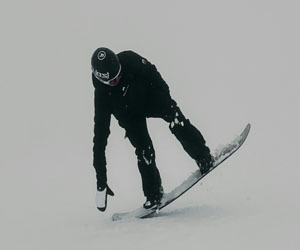
Snowboarding is more than just sliding down a mountain; it's an art form, an expression of style, and an opportunity to push your skills to new heights. Whether you're a beginner looking to add some flair to your riding or an experienced rider aiming to master new tricks, this article will provide you with valuable snowboarding tricks and tips to help you progress and make the most of your time on the mountain.
1. Get The Basics Down First: Before diving into tricks, ensure you have a solid grasp of the fundamentals. Being able to carve, turn, and stop with ease is essential. Make sure your stance, balance, and edge control are solid.
2. Start With The Ollie: The ollie is a fundamental trick that involves popping the snowboard into the air. To perform an ollie, crouch down, then spring up by extending your legs, lifting the front foot while dragging the tail of the board with the back foot. This move is the foundation for more advanced tricks.
3. Progress To Grabs: Grabs are stylish tricks that involve reaching down to touch your snowboard while in the air. Common grabs include the indy grab (front hand on the heel edge), mute grab (front hand on the toe edge), and melon grab (back hand on the heel edge). Experiment with different grabs to add flair to your jumps.
4. Learn Spins: Spinning in the air adds a dynamic element to your riding. Start with 180-degree spins and work your way up to 360s and beyond. Focus on your shoulders and upper body to initiate the spin while keeping your lower body aligned with the board.
5. Perfect Your Buttering: Buttering is a stylish ground trick where you shift your weight and flex your snowboard to create fluid, spinning movements. It's a creative way to showcase your skills on the slopes and add some freestyle elements to your riding.
6. Progress To Rails And Boxes: Once you're comfortable with basic tricks, you can venture into the terrain park to try your hand at rails and boxes. These features provide opportunities for sliding and grinding tricks. Start with easy boxes and rails and work your way up as you gain confidence.
7. Work On Your Jibbing Skills: Jibbing involves riding on rails, boxes, and other terrain park features with style and control. Focus on balance and positioning your weight correctly to keep your momentum and control.
8. Be Patient And Persistent: Learning snowboarding tricks takes time and practice. Don't get discouraged if you don't nail a trick on your first attempt. Persistence and patience are key to improving your skills.
9. Safety First: Always prioritize safety when attempting tricks. Wear the appropriate protective gear, including a helmet, wrist guards, and impact shorts. Start with small jumps and gradually progress to bigger features as your skills improve.
10. Watch And Learn: Watching videos of experienced riders can be a valuable learning tool. You can observe their techniques and pick up tips by analyzing their movements. Many professional snowboarders share tutorials and trick breakdowns online.
Snowboarding tricks are a fantastic way to add excitement and style to your riding experience. Remember to start with the basics, progress at your own pace, and always prioritize safety. Whether you're perfecting grabs, spinning in the air, or mastering rail tricks, the key to success is practice, perseverance, and a passion for shredding the slopes. Embrace the challenges, have fun, and let your creativity shine as you embark on your journey to becoming a skilled snowboarder.
Discovering The World Of Feathers
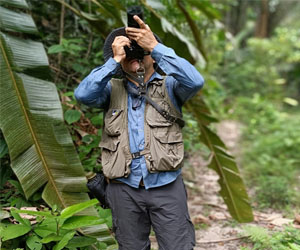 Opportunity For Connection: Birdwatching offers a unique opportunity to connect with nature on a personal level. It allows individuals to immerse themselves in the sights and sounds of the outdoors, fostering a deep connection with the environment and the wildlife that inhabits it.
Opportunity For Connection: Birdwatching offers a unique opportunity to connect with nature on a personal level. It allows individuals to immerse themselves in the sights and sounds of the outdoors, fostering a deep connection with the environment and the wildlife that inhabits it.
Health And Well-being: Spending time in nature and engaging in birdwatching can contribute to improved mental and physical health. The hobby encourages outdoor exploration, gentle physical activity, and mental relaxation. It's a meditative experience that reduces stress, promotes mindfulness, and nurtures a sense of well-being.
Lifelong Learning: Birdwatching is a hobby that continuously offers new opportunities for learning. It introduces enthusiasts to the fascinating world of bird species, their behaviors, and their habitats. As you delve deeper into the hobby, your knowledge and appreciation of the avian world grow.
Conservation Awareness: Birdwatchers often become strong advocates for conservation. As they develop an understanding of the environmental challenges birds face, they are more likely to support efforts to protect and preserve bird habitats. Many birdwatching organizations are involved in conservation initiatives.
Community And Camaraderie: Birdwatchers often form close-knit communities and clubs, offering opportunities for shared outings and camaraderie. These groups provide a sense of belonging and the chance to learn from more experienced birders.
Varied Settings: Birdwatching can be pursued in a wide range of settings, from urban parks to remote wilderness areas. Whether you live in a bustling city or a tranquil rural area, there are always opportunities to observe birds.
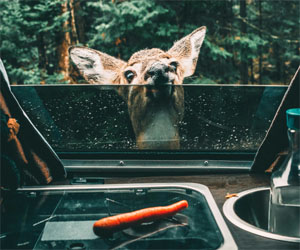 One of the most remarkable aspects of camping is the way it encourages us to appreciate the intricacies of the natural world. It's an invitation to observe the changing colors of the sky as the sun sets, to listen to the wind whisper through the trees, and to awaken to the songs of early morning birds. Through camping, we learn to notice the small details that often go unnoticed in our daily lives.
One of the most remarkable aspects of camping is the way it encourages us to appreciate the intricacies of the natural world. It's an invitation to observe the changing colors of the sky as the sun sets, to listen to the wind whisper through the trees, and to awaken to the songs of early morning birds. Through camping, we learn to notice the small details that often go unnoticed in our daily lives.
Embracing nature through camping is also an invitation to disconnect from the digital world. With limited or no internet and cellular connectivity, we are encouraged to engage with our surroundings and the people sharing our campsite. It's a chance to bond with friends and family over a campfire, to tell stories under the starry night sky, and to truly be present in the moment.
Camping is not only a way to connect with the environment but also an opportunity to reconnect with ourselves. Away from the distractions of our screens, we can reflect on our thoughts, dreams, and aspirations. We can find solace in the simple act of preparing a meal over an open flame or watching the dance of a campfire's flickering flames. It's a form of mindfulness that can bring about a sense of inner peace.
In essence, camping is an experience that encourages us to embrace nature in all its glory. It's an invitation to hike through lush forests, swim in pristine lakes, and marvel at the grandeur of towering mountains. It's a way to celebrate the beauty of the natural world and to gain a deeper understanding of the ecosystems that support life on this planet.
Building A Community Of Passion
 1. Join Local Leagues And Clubs: One of the most effective ways to meet new Ultimate Frisbee players is to join local leagues and clubs. Many cities and regions have established Ultimate Frisbee communities that organize regular games, practices, and tournaments. Search online for local clubs, Facebook groups, or meetup events dedicated to Ultimate, and attend their sessions. These gatherings provide an ideal platform to connect with fellow players who share your enthusiasm for the sport.
1. Join Local Leagues And Clubs: One of the most effective ways to meet new Ultimate Frisbee players is to join local leagues and clubs. Many cities and regions have established Ultimate Frisbee communities that organize regular games, practices, and tournaments. Search online for local clubs, Facebook groups, or meetup events dedicated to Ultimate, and attend their sessions. These gatherings provide an ideal platform to connect with fellow players who share your enthusiasm for the sport.
2. Attend Beginner Clinics And Workshops: Numerous Ultimate Frisbee organizations and clubs offer beginner clinics and workshops. These events are specifically designed to introduce new players to the sport, teach the fundamentals, and provide opportunities for networking. Attending these sessions will not only help you improve your skills but also allow you to interact with others who are just starting their Ultimate journey.
3. Participate In Recreational Tournaments: Recreational Ultimate Frisbee tournaments are an excellent way to meet new players while enjoying the spirit of competition. These tournaments often feature mixed-gender teams, fostering inclusivity and diversity. Don't hesitate to sign up for these events, even if you're new to the game. The experience of competing and socializing with fellow participants can be incredibly rewarding.

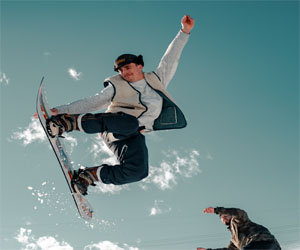



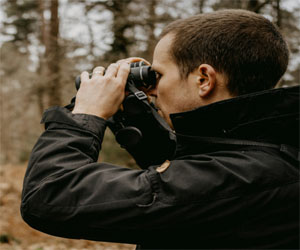
A Thrilling Journey Of Self-Discovery
 One of the most compelling aspects of mountain biking is the constant opportunity to challenge yourself. The sport offers a diverse range of terrains, from rocky paths and steep inclines to tight switchbacks and rugged descents. As a rider, pushing your limits means venturing into unfamiliar and demanding territory, where you'll confront obstacles, hone your skills, and gain a deeper understanding of your capabilities.
One of the most compelling aspects of mountain biking is the constant opportunity to challenge yourself. The sport offers a diverse range of terrains, from rocky paths and steep inclines to tight switchbacks and rugged descents. As a rider, pushing your limits means venturing into unfamiliar and demanding territory, where you'll confront obstacles, hone your skills, and gain a deeper understanding of your capabilities.
At its core, pushing your limits on mountain bike trails is about embracing challenges and expanding your comfort zone. Whether you're a beginner seeking to conquer your first challenging hill or an experienced rider aiming to clear a daunting rock garden, each obstacle represents an opportunity to grow. Overcoming these challenges is not only a physical achievement but also a testament to your determination and mental fortitude.
The pursuit of pushing boundaries often leads to self-discovery. Riders learn about their strengths, weaknesses, and resilience when navigating the twists and turns of the trail. Confronting fears and pushing through moments of doubt can be incredibly empowering and lead to personal growth.
Understanding The Risks Of Sports-Related Injuries
 1. Acute Trauma: One of the most immediate risks in sports is acute trauma, which includes injuries such as fractures, dislocations, and concussions. These injuries often occur as a result of sudden, forceful impact and can have severe consequences if not promptly addressed.
1. Acute Trauma: One of the most immediate risks in sports is acute trauma, which includes injuries such as fractures, dislocations, and concussions. These injuries often occur as a result of sudden, forceful impact and can have severe consequences if not promptly addressed.
2. Overuse Injuries: Overuse injuries are another common risk in sports. These injuries develop gradually from repetitive stress on a particular area of the body. Overuse injuries can affect tendons, muscles, and joints, leading to conditions like tendinitis, stress fractures, and muscle strains.
3. Sprains And Strains: Sprains and strains are frequent sports injuries. Sprains involve the stretching or tearing of ligaments, while strains affect muscles or tendons. These injuries often result from improper technique, inadequate warm-up, or overexertion.
4. Dislocations: Dislocations occur when a bone is forcibly pushed out of its joint. Sports that involve sudden impacts or falls, such as football or basketball, carry a higher risk of dislocation injuries.